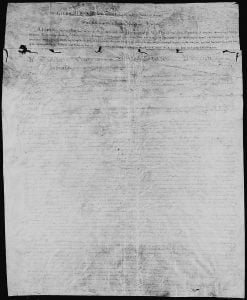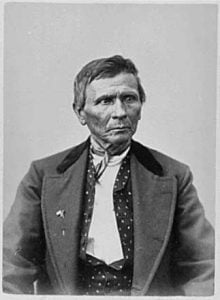Agreement of January 3, 1818
Contract entered into under the authority of the United States, between governor Thomas Posey, superintendent of Indian affairs, and Chekommia or Big River, principal chief of the Piankeshaws. This indenture, made this third day of January, 1818, between governor Thomas Posey, superintendent of Indian affairs, on the one part, and Chekommia or Big River, principal chief of the Piankeshaw tribe of Indians, acting as well in his own name, as in the name and behalf of the said Piankeshaw tribe of Indians, on the other part, witnesseth: Whereas, at a treaty held under the authority of the United States, with … Read more



